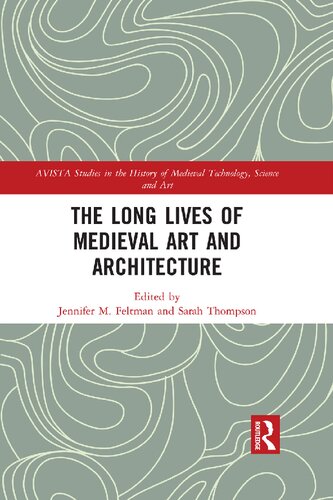

Most ebook files are in PDF format, so you can easily read them using various software such as Foxit Reader or directly on the Google Chrome browser.
Some ebook files are released by publishers in other formats such as .awz, .mobi, .epub, .fb2, etc. You may need to install specific software to read these formats on mobile/PC, such as Calibre.
Please read the tutorial at this link: https://ebookbell.com/faq
We offer FREE conversion to the popular formats you request; however, this may take some time. Therefore, right after payment, please email us, and we will try to provide the service as quickly as possible.
For some exceptional file formats or broken links (if any), please refrain from opening any disputes. Instead, email us first, and we will try to assist within a maximum of 6 hours.
EbookBell Team

4.7
16 reviewsTraditional histories of medieval art and architecture often privilege the moment of a work’s creation, yet surviving works designated as "medieval" have long and expansive lives. Many have extended prehistories emerging from their sites and contexts of creation, and most have undergone a variety of interventions, including adaptations and restorations, since coming into being. The lives of these works have been further extended through historiography, museum exhibitions, and digital media. Inspired by the literary category of biography and the methods of longue durée historians, the introduction and seventeen chapters of this volume provide an extended meditation on the longevity of medieval works of art and the aspect of time as a factor in shaping our interpretations of them. While the metaphor of "lives" invokes associations with the origin of the discipline of art history, focus is shifted away from temporal constraints of a single human lifespan or generation to consider the continued lives of medieval works even into our present moment. Chapters on works from the modern countries of Italy, France, England, Spain, and Germany are drawn together here by the thematic threads of essence and continuity, transformation, memory and oblivion, and restoration. Together, they tell an object-oriented history of art and architecture that is necessarily entangled with numerous individuals and institutions.